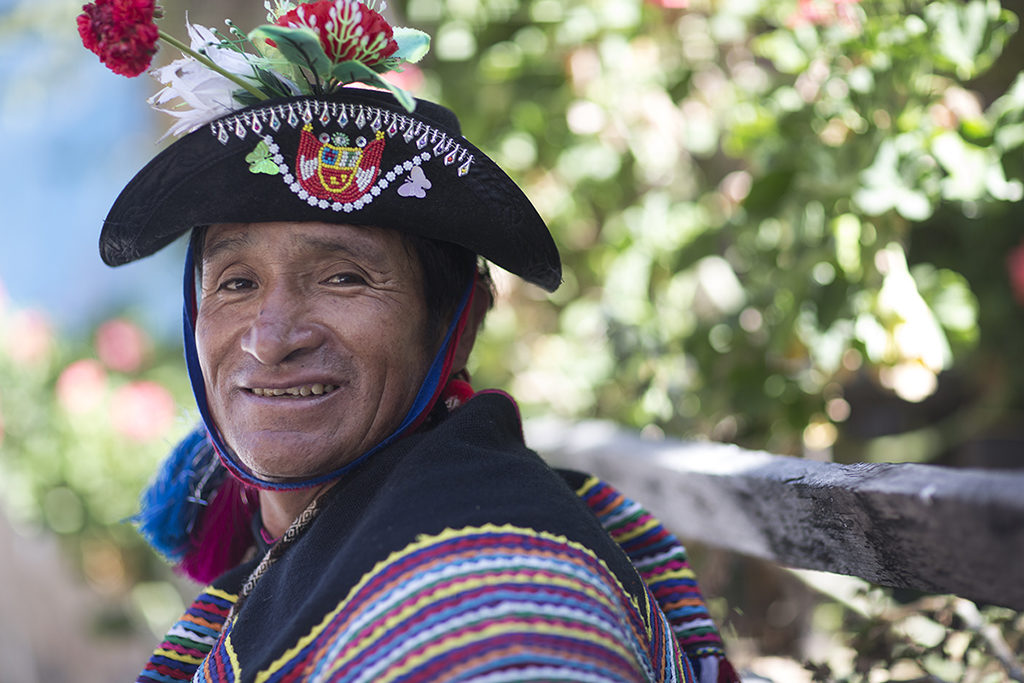Gerardo Castillo, 54
150 varieties
Paccho Molinos, Acobamba, Huancavelica
My grandparents used to tell us a story; they’d say, “Okay children, you have to plant your potatoes along with the mashua (a type of Andean tuber). It’s necessary to plant the potato alongside mashua because it has stolons (a creeping horizontal plant stem) that hold on tight and it makes the potatoes stay in place; it attracts other potatoes, too. It makes like a little corral and has lots of arms that gather the potatoes in.
According to them (our grandparents), potatoes go out for a stroll at night and there is one potato that is very macho: the Allqawazas. It has a red and white skin and yellow flesh. That potato is very macho. It beats all the other potatoes at boxing. It wins everything and makes the other potatoes cry. Even the Cacho de Toro (bull’s horn) won’t come, and that potato is big and crafty. When it beats the Marquina potato at singing, Marquina starts to cry. That potato is a real crybaby.
The male potatoes are characterized by their elongated oblong shape. They are strong potatoes that resist frost and hail like potatoes from the Walash (young male) group. Back to back, the fight begins until one of the opponents is brought to his knees. This ancient custom comes from a time when people fought for agricultural vigor and fertility.
The reason the long potatoes fight in the chaqru is that they are fighting for the Pasñas, which are typically round-shaped. A strong pasña is known in the chaqru because they’re great singers and dancers and they’re usually very pretty.

